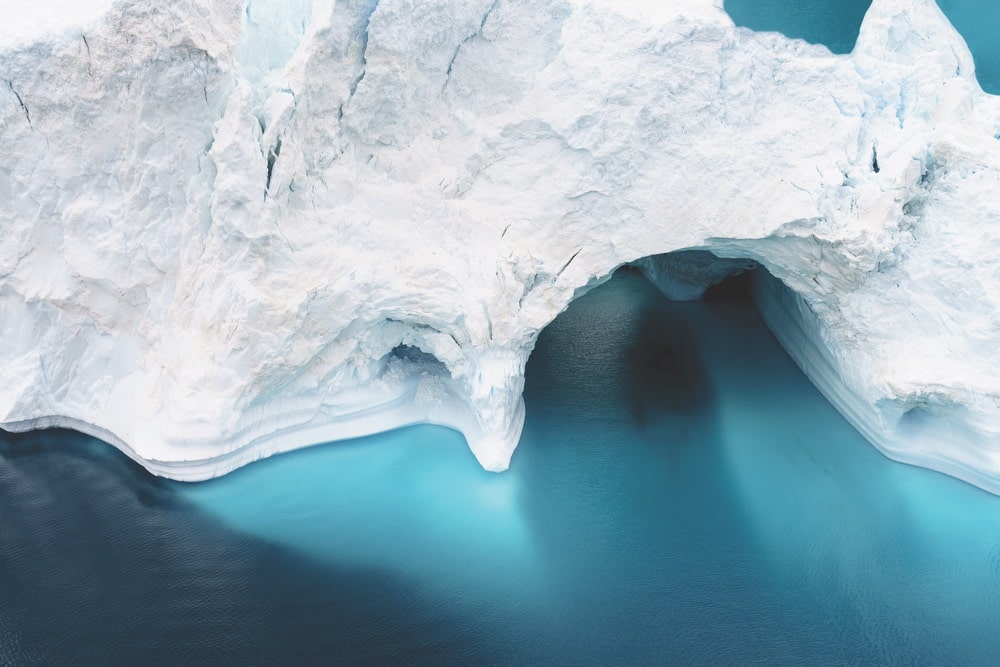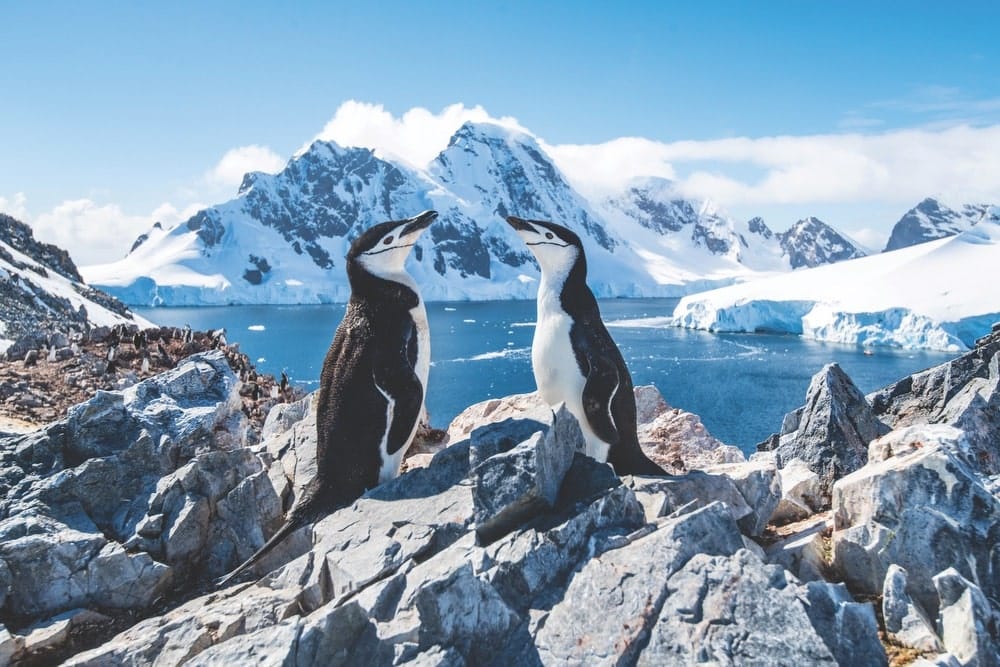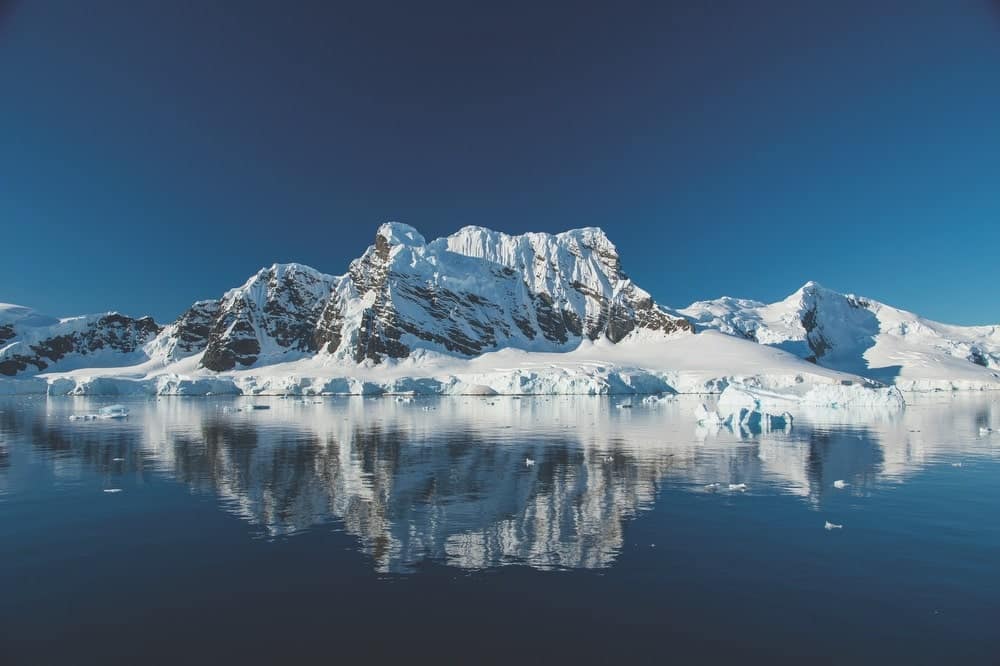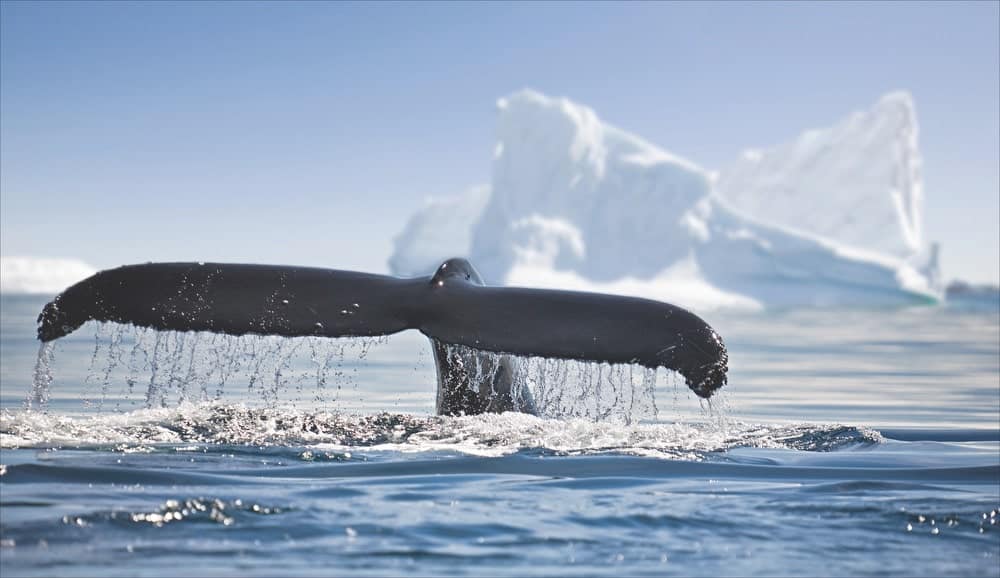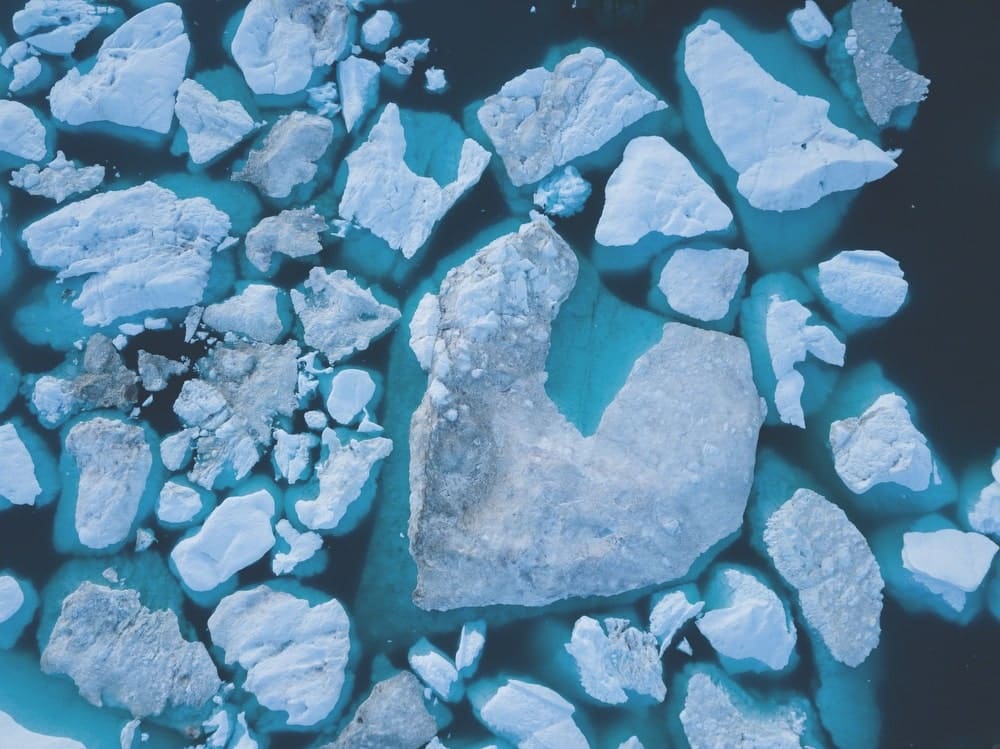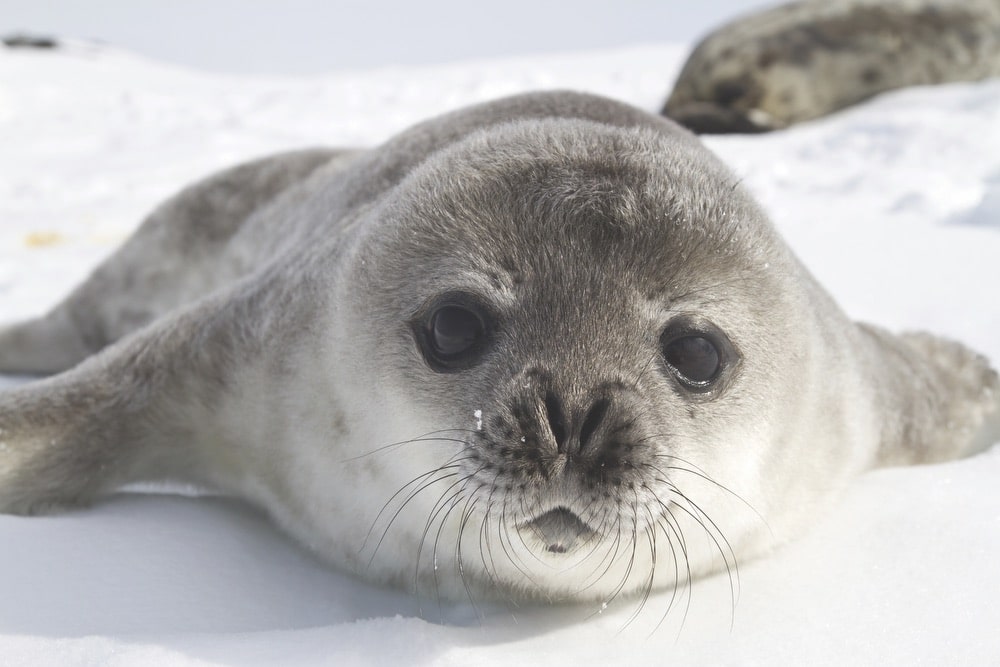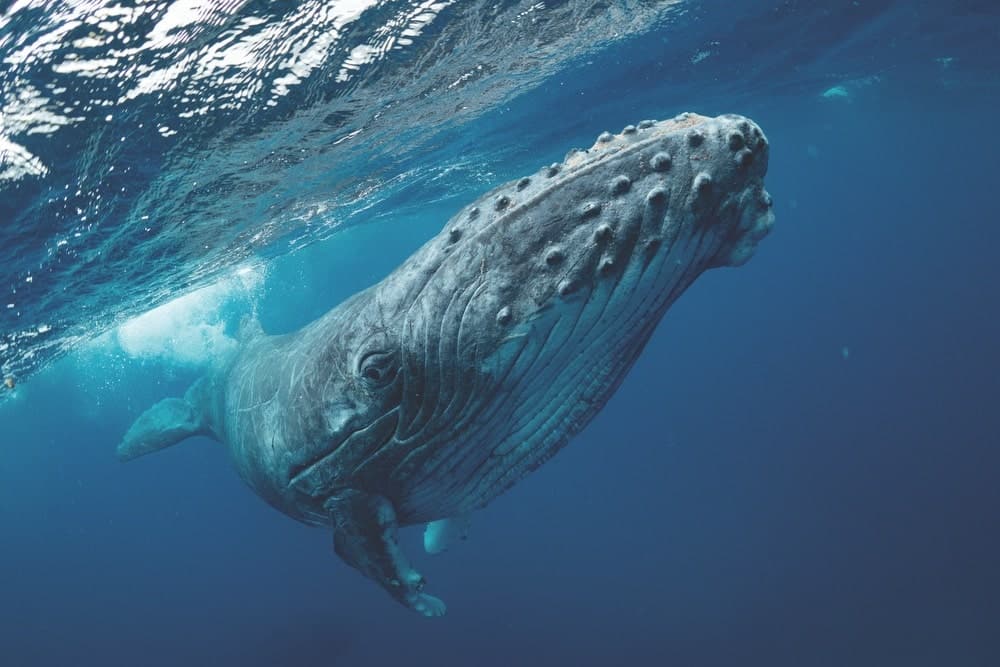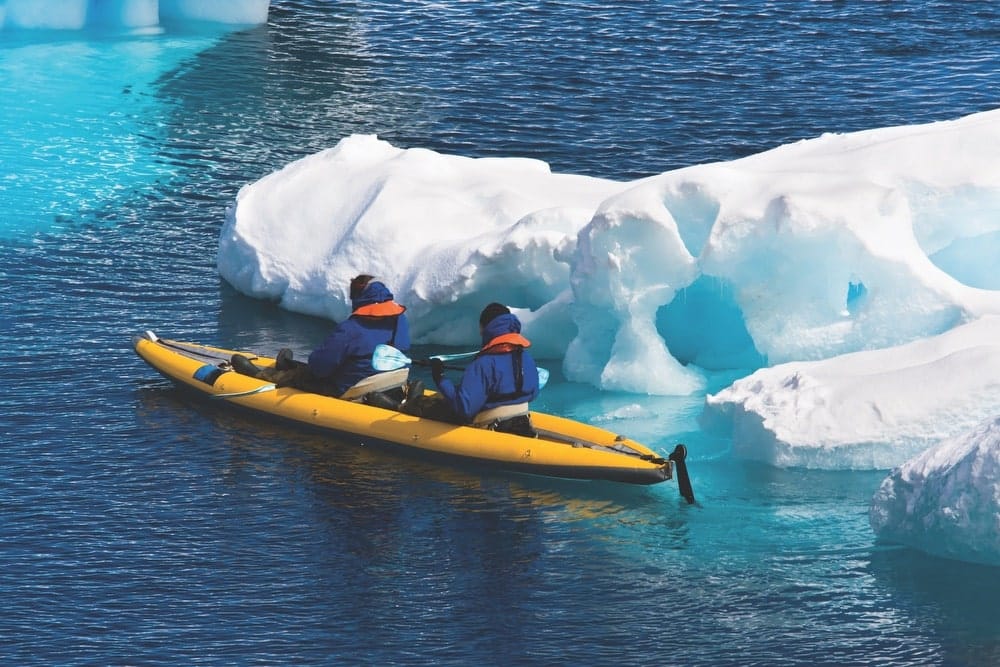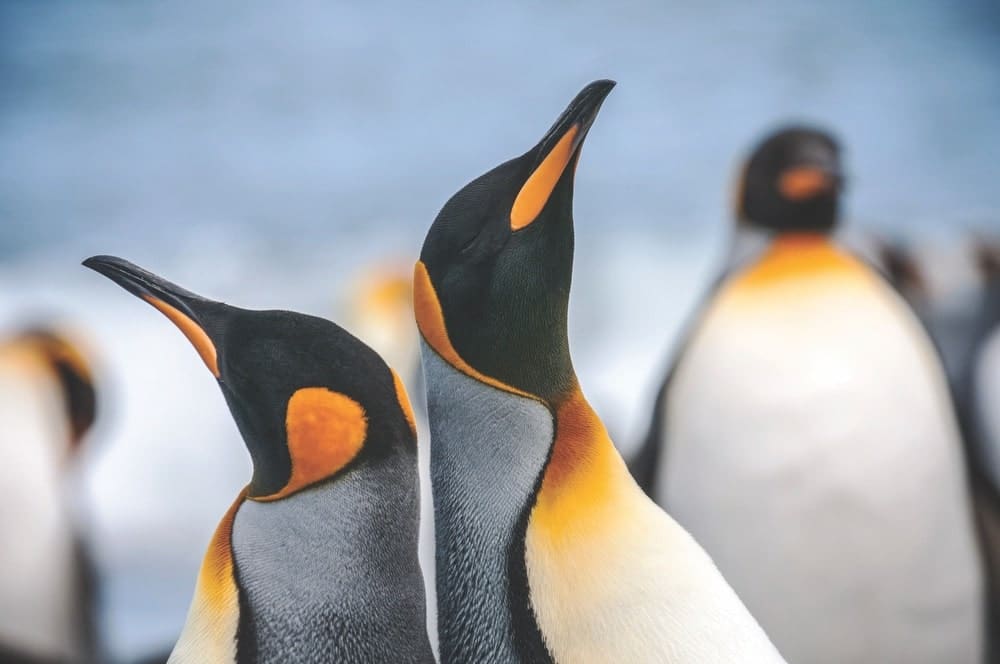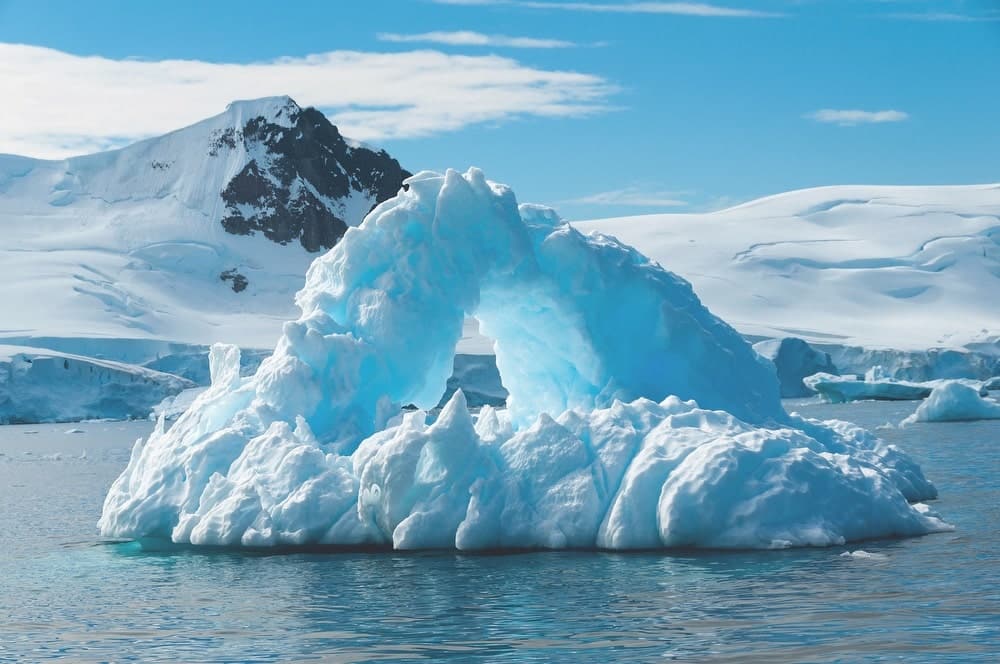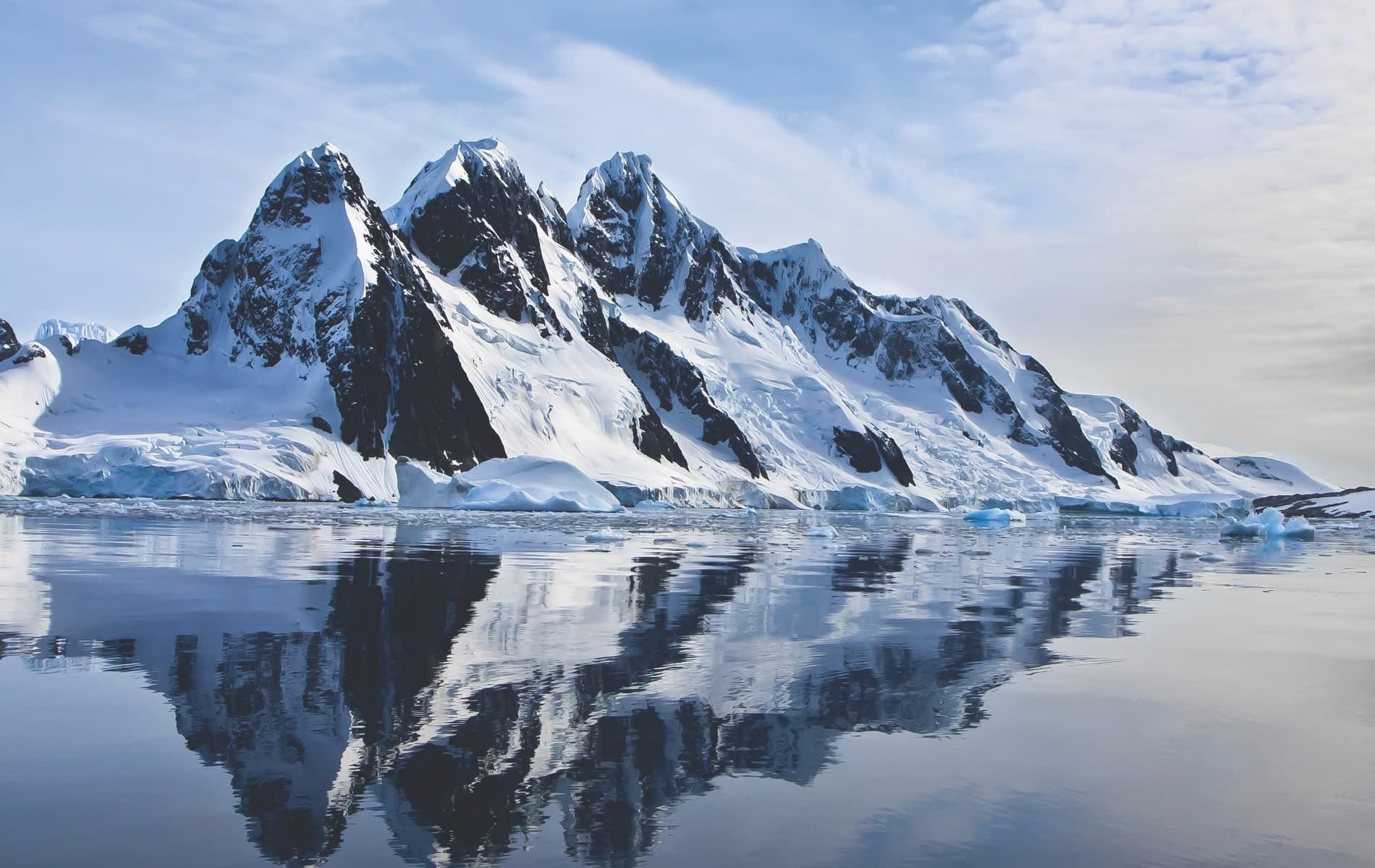
VIE_Magazine_FEB23_article_Antartica_Adventure_HERO-min
Adventure to Antarctica
By Xenia Taliotis | Photography courtesy of Chimu Adventures
We set off for Antarctica under fire. Bullets of skin-bruising, bone-saturating rain and hail pelted us as we boarded our ship in Ushuaia, Argentina, the southernmost city on the globe—otherwise known as the “fin del mundo,” or the end of the world. Beyond this point, land plummets into the sea, resurfacing at the White Continent—the bottom of the world.
Remote, wild, vast, mysterious, majestic, beautiful, deadly Antarctica—the windiest, coldest, driest, and most hostile land on our planet—lay more than one thousand kilometers and two days away. Between us and it was the most treacherous body of water on Earth—the Drake Passage. This volatile Jekyll-and-Hyde channel, where the Atlantic, Pacific, and Southern Oceans collide, shows occasional benevolence under the guise of Drake Lake. Still, more often than not, it rages as the Drake Shake.
Ocean Endeavour, our Chimu Adventures-chartered polar cruise ship, hit the passage just as Drake calmed down from an outburst. Though our expedition leader had delayed our departure to avoid the worst of the violence, we still had to pound through furious waves that rose like demons from the depths, throwing our vessel from one swell to the next. So many people were felled by motion sickness that the restaurant and bars were left largely deserted, occupied only by those who, like me, have the sea in their blood or—less poetically and certainly more accurately—legs as sturdy and solid as an anchor.
Whenever Drake’s waves allowed, I went on deck to scan the sea and sky for wildlife. Soon there would be whales and dolphins, but at the start of our journey, all the action was in the air. Various petrels glided toward me, looping in and out; in their midst was the magnificent wandering albatross. With a wingspan of up to three and a half meters, it is the largest bird on Earth and lives almost entirely on the wing, going on land only to breed. Sighting that remarkable creature was the first of many times I was moved to tears on this voyage.
The next day dawned infinite and blue. Having crossed the Antarctic Convergence, we were officially in Antarctica and drifted through ice floe gardens toward our first landing—Danco Island. Ahead of us, an iceberg—a huge, ethereal, ice-blue presence—rose out of black waters, drawing gasps of wonder from the passengers. It was one of the most beautiful sights I had ever seen, its luminous, mesmerizing blueness resulting from nature’s alchemy: over millennia, the snow and ice on glaciers become so compacted and dense that all the long-wavelength colors are absorbed, and only the shortwave aquamarines are reflected.
In preparation for our first disembarkation, we attended briefings on how to safeguard Antarctica, its residents, and ourselves. While tourism’s impact on this still-pristine wilderness can’t be eliminated without banning visits, we can limit it by sticking to the rules, the foremost of which is to remember that we are guests of the wildlife that lives here. We were told to stay a respectful distance from the animals—at least five meters from the penguins and more for breeding birds and seals—and before we left the ship for our first landing, all our expedition clothing was vacuumed to prevent contamination. Additionally, our boots were disinfected before and after each visit to the shore.
We boarded our Zodiacs and chopped past leopard, fur, and crabeater seals lumbering down on ice floes and penguins porpoising (jumping) in formation before we disembarked in small groups for strictly timed explorations of Danco Island. There we experienced our own live episode of a wildlife television documentary as we watched Gentoo penguins feed their chicks and make the slow, arduous climb along their highways from the water to their colonies. It was a lesson in dealing with the knocks life gives us. Heads down against the blizzard, walled in by snow, the penguins’ choice came down to climb or die. They walked on, and they fell. They got up. They climbed. I admired their resilience, determination, and perseverance and wished I had one drop of it flowing through my veins.
We visited more Antarctic islands on other days, and each time, our voyage took us through scenes of such extraordinary beauty that they made my heart swell to accommodate them. I learned a new vocabulary to describe what I saw: When is an iceberg not an iceberg? When it’s smaller than four and a half meters, it’s called a bergy bit. And what’s a pancake when it’s at sea? A circular piece of ice, of course. Similarly, whales don’t jump, they breach; they have flukes, not tails; and they have blowholes, not spouts.
Our expedition leader urged us to go on deck one morning to experience the wonder of the Lemaire Channel, a narrow iceberg-filled passage flanked by steep, dazzlingly bright, snow-covered cliffs with summits in the heavens. Often blocked by ice, Lemaire had only allowed one other ship through that season, so we all—down to the most seasoned crew member—felt among the luckiest people alive.
Beyond this was Port Charcot, where our walk across the snowfields was rewarded by views of the Wandel Peak, the 980-meter (3,215-foot) mountain that has yet to be conquered. Again, our groups took turns to land and cruise. When we were in our Zodiacs, our drivers cut the engines so we could listen to Antarctica. On land, it is possible to hear nothing except your own heart and breath, but out on the water, we listened to the constant snap, crackle, and pop of ice, the barking of seals, and the calls of nature.
I saw things I didn’t expect to see in Antarctica—a desolate whaling station on Deception Island where the remains of boats, animals, buildings, and humans have created a mournful museum that is gradually being claimed by nature, and a post office at Port Lockroy, on Wiencke Island, from which I sent myself a postcard. It arrived in London six weeks after I did.
Every day I did or learned something new, and every day I experienced something extraordinary, a shifting of perception, and an even deeper appreciation of nature and our environment. Sometimes I had to check that I had heard things correctly. For example, was it true that this was the only place in the world where you could sail into an active volcano? The answer was yes: Deception and Half Moon Islands are in the caldera.
When I stepped foot on mainland Antarctica, as opposed to its islands, I felt the sense of isolation the continent had promised me. Despite the presence of others, and while still respecting the rules and the wildlife, I was able to walk just far enough away from my shipmates to sink into a literal and metaphoric stillness, the like of which I’d never experienced.
Every day I did or learned something new, and every day I experienced something extraordinary, a shifting of perception, and an even deeper appreciation of nature and our environment.
Looking out into that eternal white, I saw the “void space” explorer Ernest Shackleton wrote about and got some tiny hints of the disorientation that comes from having no trees or shrubs, no paths or markers to give perspective and bearing. I turned my back on my group and gave my mind a chance to fall into a landscape of such pure elemental force that, for a few seconds, it stopped me from breathing. I saw the truth of Antarctica and the power of nature unchecked. This was a place that tests and rewards the body and spirit in equal measure, and also one that had pushed so many to a point beyond what could possibly be endured.
The White Continent showed me that the saying “it’s never as good as the first time” was untrue. No matter how many times I saw a whale breach or blow, no matter how many glaciers I sailed past, no matter how many penguins I watched struggle up their highway or lower their heads against the wind, I never felt anything but astonished and awed by the sheer majesty of Antarctica. It taught me humility and put me in my infinitesimal place.
This was a place that tests and rewards the body and spirit in equal measure, and also one that had pushed so many to a point beyond what could possibly be endured.
Back home, I remembered the vast quiet, the huge roar, the struggle, and the fights to the death or to live, and I wondered if it was all a dream. Then I’d look through my photographs and get a sense that I had traveled back in time—that the sights that met me were the same sights that had met those early explorers who first landed on this raw, wild mass. Long may that remain so.
— V —
Xenia Taliotis traveled to Antarctica with Chimu Adventures on their Best of Antarctica Cruise. The starting price is $9,808 AUD ($6,710 USD), based on a Category 4 cabin. The company has several Antarctic itineraries from which to choose. Visit ChimuAdventures.com for details.
Antarctica Packing Essentials
Read the details your Antarctic tour operator sends you. Beg or borrow (but don’t steal) everything you’re advised to take, or you’ll be miserable.
- Layering is the key to staying warm. I averaged five layers on top, four on my legs, and three on my feet.
- You’ll need thermals—long-sleeved vests and leggings, two or three base layers on top of that, and a good fleece beneath your parka.
- Woolen socks, worn on top of socks and/or tights.
- Gloves—one thin pair with another thicker, waterproof pair on top, plus a balaclava or hat and neck warmer.
- Parka and waterproof trousers. I stayed snug and dry in borrowed skiwear, but had the weather been bad, I might not have fared so well. Many people opted for heavy-duty polar wear, which would have withstood blizzards.
- Muck boots. Ocean Atlantic provides these, but not all operators do. These are essential—you won’t be able to get away with hiking boots.
- Sunglasses. UV-protected, wrap-around shades with polarized lenses to reduce glare are best. Try to buy the best you can afford.
- Sunscreen and lip balm are essentials. There’s a hole in the ozone right above Antarctica, which means that the ultraviolet sun will be beating down on you. Make sure your sunblock will protect you from UVA and UVB rays.
- Good camera equipment. Sadly, I only had an iPhone, but the make of choice for serious photographers seems to be Canon.
- Binoculars. Again, spend as much as you can. Choose something lightweight, water-repellent, and powerful so you can bird- and whale-watch with perfect clarity.
Share This Story!
KEEP UP WITH THE LATEST STORIES FROM VIE



